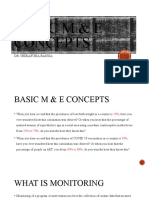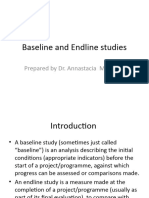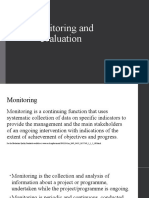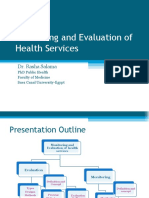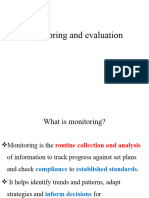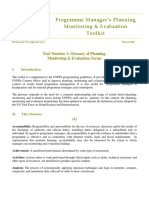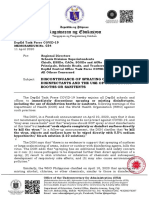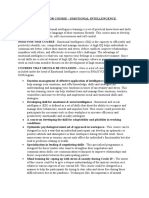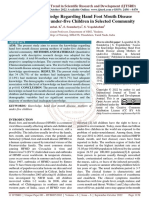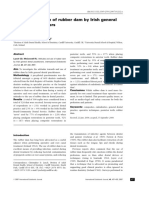0% found this document useful (0 votes)
43 views14 pagesMonitoring and Evaluation I Notes
This document provides an introduction to Monitoring and Evaluation (M&E), outlining its importance as a management tool for tracking project performance and impact. It defines key concepts, terms, and processes related to M&E, including monitoring, evaluation, and the differences between them. By the end of the module, learners are expected to demonstrate an understanding of M&E concepts, project management, and data analysis methods.
Uploaded by
denzelotieno004Copyright
© © All Rights Reserved
We take content rights seriously. If you suspect this is your content, claim it here.
Available Formats
Download as DOCX, PDF, TXT or read online on Scribd
0% found this document useful (0 votes)
43 views14 pagesMonitoring and Evaluation I Notes
This document provides an introduction to Monitoring and Evaluation (M&E), outlining its importance as a management tool for tracking project performance and impact. It defines key concepts, terms, and processes related to M&E, including monitoring, evaluation, and the differences between them. By the end of the module, learners are expected to demonstrate an understanding of M&E concepts, project management, and data analysis methods.
Uploaded by
denzelotieno004Copyright
© © All Rights Reserved
We take content rights seriously. If you suspect this is your content, claim it here.
Available Formats
Download as DOCX, PDF, TXT or read online on Scribd
/ 14





